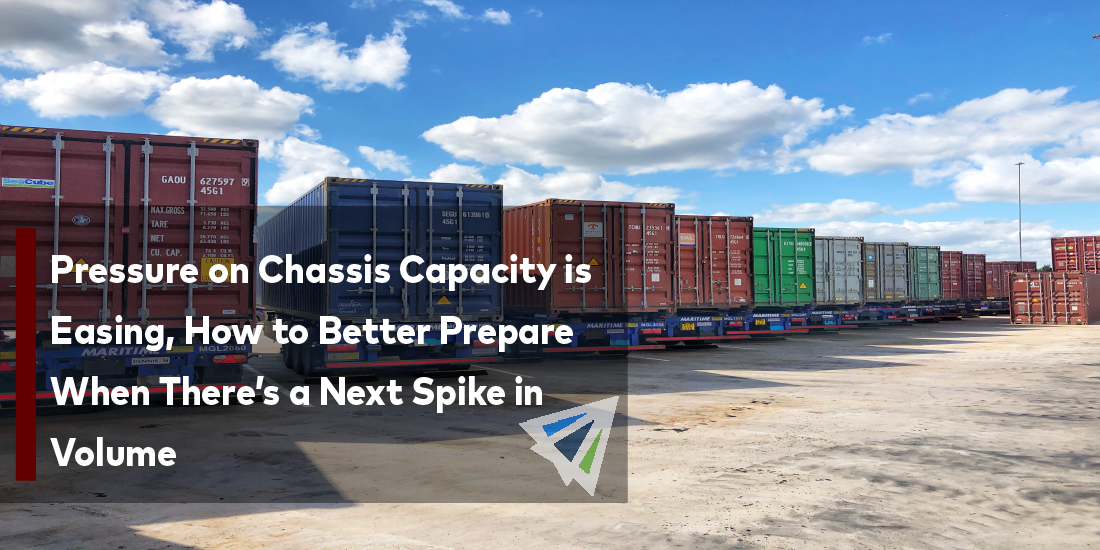Marine chassis suppliers in the US are observing a positive shift in shippers’ equipment returns, which is easing capacity strain and allowing lessors to determine how to handle upcoming volume surges more effectively. Chassis suppliers think there are important lessons to be gained from the pandemic’s increase in volume and subsequent shortages of equipment. Among them are gathering more prediction information, keeping more equipment on hand in case capacity needs to be flexed, and closely watching a few inland locations that faced equipment shortages in 2021 and 2022.
TRAC Intermodal’s COO, Val Noel, mentioned the chance to reevaluate the positioning and realignment of chassis in order to assure the right fleet amount in the right markets to satisfy customer expectations. The demand for inland marine chassis increased significantly in 2022, while this year has seen a major fall in the volume of international intermodal rail traffic. Trains in North America moved 2.4 million ocean containers in the first four months of 2023, down 12.7% year over year, according to the Intermodal Association of North America.
As a result, the street dwell time for US chassis has fallen from eight to ten days during the same period in 2022 to between six and eight days through April. Street dwellers are already comparable to levels from 2020 in some cities, according to data from TRAC and DCLI, while they are still around 2021 levels in other areas. According to DCLI’s Senior Vice President of Government and Public Relations, Mike O’Malley, container volumes have largely returned to their pre-pandemic levels, creating a glut of chassis throughout their entire network.
By renovating chassis, converting them to radial ones, and installing hard-wired lighting, DCLI continues to invest in fleet development to satisfy future customer demand. They’re also increasing their reach to prominent markets.
The Search for More Accurate Data
The US Department of Transportation’s Freight Logistics Optimization Works (FLOW) program was highlighted by the three largest US marine chassis lessors, TRAC, DCLI, and Flexi-Van Leasing. An initiative to share information with the goal of improving supply chain effectiveness is called FLOW. The COO of Flexi-Van, Than Seeds, stated the hope that FLOW will give chassis lessors enough information to foresee and actively manage congestion and fleet operations as opposed to reactively managing them. Even if large chassis lessors and railroads already receive data from ocean carriers, the lead times are still lower than what the FLOW initiative can provide.
Because companies depend on truckers to move their chassis between locations, the shorter lead times present logistical difficulties for the manufacturers of chassis. When volumes are higher in ports or rail terminals, it puts undue pressure on truckers as finding capacity amidst increasing demand becomes significantly more challenging.
Having volume projections up to 90 days in advance, as suggested by FLOW, would make it easier to preposition chassis to ports and rail terminals in advance rather than scurrying when the cargo arrives, according to DCLI. Improved projections, according to Val Noel, would have prevented unanticipated shortages during the pandemic in Omaha, Nebraska; Kansas City and St. Louis, Missouri; Houston, Texas; and other locations in Ohio. Moving forward, these are the markets that will require concentrated attention.
Stocking Up On Equipment for Emergencies
All three equipment suppliers are rethinking their plans for storing extra chassis to accommodate abrupt increases in container volumes. Similar to shippers prior to the epidemic, chassis providers often try to keep their inventories at a reasonable level. They are now switching to a just-in-case fleet strategy, similar to shippers that had stockouts and lost sales as a result of just-in-time inventory management techniques. In areas where flexibility is essential, DCLI is taking a market-by-market strategy and developing a reserve fleet.
In cities with wheeled operations, where railways pre-mount containers onto chassis at the terminal before drivers pick them up, TRAC plans to expand its reserve fleet. Wheeled terminals are present in important US markets like Chicago and Dallas, which in 2021 and 2022 had significant congestion and a lack of chassis. Noel asserts that maintaining fluidity in a wheeled environment during a volume increase depends on keeping a sufficient fleet on-site. Even while they are equally crucial in a grounded context, their effects on the entire supply chain are not as severe as they may be in a wheeled environment.
In Summary
The fast equipment return by shippers has reduced capacity demand on US marine chassis suppliers. The need of gathering additional forecast data, keeping equipment reserves, and closely monitoring particular inland cities has been underlined by lessons learned from the equipment shortages and volume rise during the pandemic. In order to increase supply chain effectiveness, chassis lessors are supporting data-sharing efforts like the FLOW program. In order to deal with rapid volume increases, they are also reviewing their tactics and concentrating on wheeled operations in important markets. Overall, these changes are made to enable a more efficient and responsive chassis supply chain and to better satisfy customer expectations.
